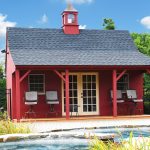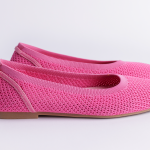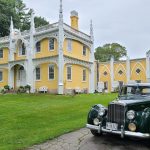A Father’s Gift
People say the heart is a symbol of love. But for this do-it-yourself Maine farm family, it’s a pair of hands.

Coffee By Design | Portland, Maine
Photo Credit : Katherine KeenanBy Erin Rhoda
When I picture my grandfather, he is refilling the wood stove on his farm in Milo, Maine. He is turning over a row of potatoes with a potato digging fork. When the Piscataquis River flooded my grandparents’ home, he rebuilt the walls himself. For each of his grandchildren, he hand-made a pine desk and chest. I remember few things he said, as he was quiet, but I remember what he did.
Today, I still see my grandfather in my father, who inherited the same creased eyelids, downward smile, and affinity for hard labor, stubbornness, and doing things yourself. The Rhoda family milked about 30 cows and ran a farm stand, all while my grandfather also worked for the American Thread Company and the railroad. My father told me that when he was little, he had to work outside with his father if he wanted to spend time with him. My grandfather instilled in my father a love of the land and the need to make something out of it. When my mom and dad bought a 75-acre farm with a red farmhouse in 1977 in Washington, Maine, my grandfather asked them why they would do such a thing when they could get by without all the work that a farm entails. I asked my father the same thing, years later.
It’s not about making a living, he said. It’s about a way of life.
My parents’ red farmhouse, situated next to an old Wolf River apple tree and overlooking two massive maple trees, fields, and woods, was my introduction to my family’s definition of Maine. The day I learned to tie my shoes, I ran outside to tell my father, who was measuring out straight rows in his garden using pieces of wood and string. That’s great, he told me. Now you can help me tie the string around this stake.
My parents still chop and stack several cords of firewood and hay their fields twice a summer. They have kept a number of animals—sheep, goats, chickens, turkeys—and grow their own vegetables (including too many tomatoes and hot peppers). And sometimes, my father surprises me with a gift: a tall bookcase made from my grandfather’s pine, an outdoor picnic table with benches, a picture with a handmade wooden frame.
People say the heart is a symbol of love. For my family, it’s a pair of hands.

Photo Credit : courtesy of Joanie Rhoda
This is perhaps why it was so difficult for Matt and me to find a place to be married several years ago. All the wedding venues we looked at felt empty and meaningless—intimate spaces too easily bought. After months of searching, Matt said, “Why don’t we just get married on your parents’ farm?” He knew what I wanted before I realized it myself.
I walked the property, trying to see where we could fit nearly 100 people. There was plenty of space in the fields, but the ground was too hilly for chairs. The cement pad in the upper back field was workable, but it was covered in logs and farm equipment and surrounded by prickly nettle. It became clear that the best and only spot would be facing the Wolf River apple tree, where guests would have views to the horizon. The problem was that next to the apple tree stood an 1830s barn covered with dirty, peeling green asphalt-shingle siding. It was sinking in places and was filled with manure, spiders, and decades of accumulated junk.
No problem, my parents said. We’ll just clean the inside and replace the asphalt siding.
In March, with crowbars and hammers, we started removing the outer layer of the barn’s face, followed by the black tar paper that covered the wooden planks. But once we reached the underpinnings, we realized we had a problem: Many of the beams and boards were rotten. Five months before the wedding, we were going to have to rebuild the entire front side of the three-story barn.
My father never considered hiring professionals. He borrowed scaffolding from a friend, and I held the ladder as he climbed up 25 feet to bolt the legs in place. Nearly every weekend, Matt and I traveled home to help. We stripped away siding, demolished door and window frames, hammered out weak boards, and trucked it all to the dump. My father worked almost every day on the project, sometimes late into the night, the blazing barn lights competing with the stars.
He planned out the new design, bought materials, leveled the structure as much as he could with his father’s railroad jack, and orchestrated our every move. He taught us everything: how to use the circular saw and sawzall, perfect the flashing around handmade windows, construct and hang level doors, and edge the new pine siding. The one week he was away for work, he left us a 10-page PowerPoint presentation, complete with photo diagrams and precise board lengths and angle cuts.
We finished the barn two days before the wedding. My grandfather would have been proud.
The first thing I heard on our wedding day was the buzz of heat bugs. It was scorching. I found my father tending to the tomatoes in the garden near the ceremony spot and cleaning caterpillar webs out of the apple tree, a knife on his belt, ready for anything.
My father showed his love and honored our love with every swing of his hammer. Fittingly, he cut the trim at the barn’s peak into the shape of a heart.
We finished the barn two days before the wedding, and I know my grandfather would have been proud. Each year since, my parents have tackled another side of the barn. Sometimes I visit and find them high above the ground, yelling at each other through their earplugs, trying to extend the barn’s life with simple materials and hard work. This is how I’ll always remember them.







